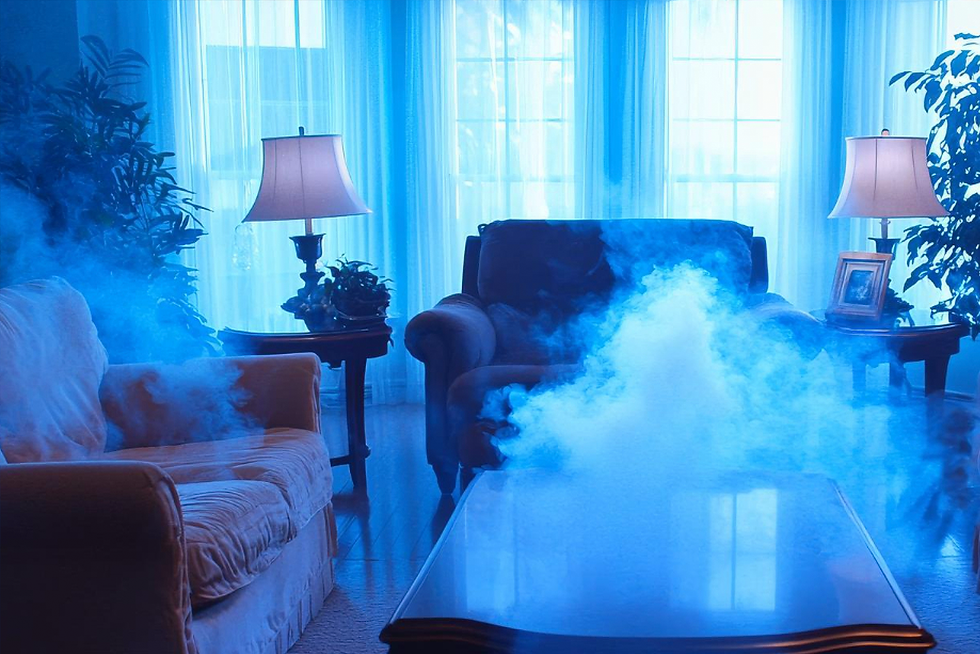EPA Announces Delay of Lead Renovation, Repair and Painting Rules Enforcement
- Corey Provencal

- Aug 3, 2010
- 4 min read
On June 18, the Environmental Protection Agency (EPA) announced the delay of enforcement of the new Lead Renovation, Repair and Painting (RRP) regulations that had been put into effect on April 22, 2010. The delays, as stated in a June 18 EPA (http://www.dealer.org/files/EPA_Delay_Announcement_6_18_10.pdf) memo are:
•Until October 1, 2010, EPA will not take enforcement action for violations of the RRP Rule’s firm certification requirement. (It should be noted, however, that only the certification requirement is delayed and that failing to follow safe work processes will trigger a violation).
•For violations of the RRP Rule’s renovation worker certification requirement, EPA will not enforce against individual renovation workers if the person has applied to enroll in, or has enrolled in, by not later than September 30, 2010, a certified renovator class to train contractors in practices necessary for compliance with the final rules. Renovators must complete the training by December 31, 2010.
Rich Walker, American Architectural Manufacturers Association (AAMA http://www.aamanet.org/ ) president and CEO, stated “We are pleased that the Environmental Protection Agency has listened and responded to at least one of the concerns of our members and those of the remodeling and renovation industry. The recovery of the economy depends heavily on the health of the construction industry, including renovation, remodeling and retrofitting work, all of which are directly affected by the Lead RRP rules.”
The June 18 EPA delay notice follows the introduction of an amendment within the Fiscal Year 2010 Emergence Appropriation Bill from Senator Susan Collins (R- Maine) which would prevent EPA from fining contractors for non-compliance with the training requirements for lead paint hazard mitigation if the contractors sign up for the mandatory EPA training by September 30, 2010. This bill is scheduled to go before the House for final approval on Friday, June 25.
During debate for the amendment, staunch proponents of the EPA’s final rule, Senators Barbara Boxer (D-California) and Dianne Feinstein (D-California), reiterated the EPA’s claims of an adequate stock of statewide and “traveling” certification trainers and certified renovators. Senator Feinstein stated, “In reality, passing this amendment would put the United States Senate on record as supporting efforts to prevent EPA from fining those who knowingly violate the provisions of the rule — even if those actions result in lead poisoning of children.”
“Many proponents respond to any implementation delay requests by suggesting that they alone are concerned for the welfare of at-risk populations,” states Janice Charletta, AAMA association services director. “AAMA, its membership and others impacted by the LRRP have repeatedly contended and continue to state that safety is a top priority. But we must recognize that the safety of children and the population as a whole will occur as a result of a well-designed and well-implemented action plan on the part of EPA.”
Unfortunately, the lack of an adequate number of certified trainers throughout the country is only one of the problems associated with implementing the EPA final rule with the exclusion of the “opt-out” provision. Another continued concern relates to the mandated use of unreliable test kits that will needlessly burden homeowners with the increased costs of lead abatement, where lead may not be present. EPA representatives have acknowledged that the current testing kits register a high percentage of false-positive readings.
As written within the final rule and reiterated in the fiscal report issued by the Government Accountability Office, “EPA estimates that the final rule will cost approximately $500 million in the first year, with the cost expected to drop to approximately $300 million per year starting with the second year, when improved test kits for detecting the presence of lead-based paint are assumed to become available.”
Forcing homeowners to pay for potentially unnecessary lead abatement based on EPA-acknowledged faulty testing becomes a legal issue. According to Walker, any contractor using test kits known to have less than a 60% accuracy rate would be targeted for litigation.
AAMA continues to advocate for a full review of the EPA final rule as requested in a letter to Environment and Public Works Chair Barbara Boxer from Senator James Inhofe (R-Oklahoma). Additionally, the association is working with AAMA members and other affected industries to solicit additional co-sponsors for S3296 (Inhofe) and HR5177 (Representative Denny Rehberg; R-Montana), two bills currently circulating that request a full year delay in the implementation of the final rule.
Walker believes that allowing the final rule, as written, to be implemented puts the Senators opposing an implementation extension on record as supporting efforts to force homeowners to pay for unnecessary abatement procedures based on the use of faulty test kits of which Congress was made fully aware.
“A number of important issues need to be addressed before the public is faced with paying for this overreaching and poorly administered provision. We are hopeful that all members of Congress will take their position of providing oversight seriously in this matter and determine that a hearing examining the EPA decision to remove the opt-out provision is necessary and warranted,” states Walker.
He continues, “We have seen firsthand, in these last few months, the power of a unified industry voice lobbying for change in legislation. We will continue to work with government and industry leaders to bring the message of our industry to Washington to continue to serve the best interests of the public, our members and the fenestration industry as a whole.”
John P. Lapotaire, CIEC Certified Indoor Environmental Consultant Microshield Environmental Services, LLC www.Microshield-ES.com www.CFL-IAQ.com









Comments